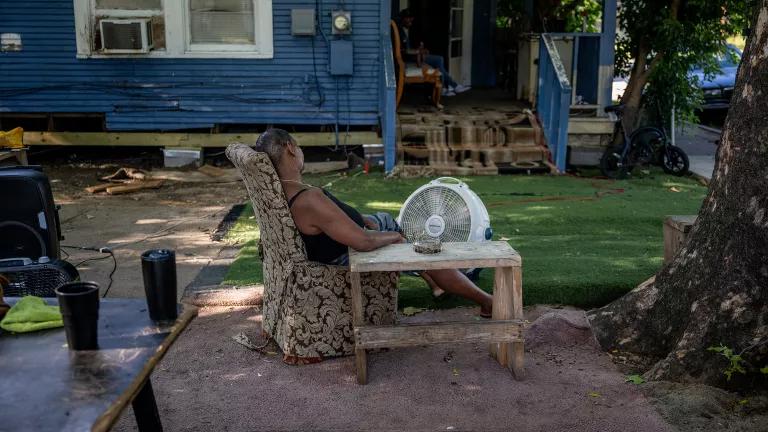Four years ago, with the renovation of our Chicago office, we were ready to rise to the next level of environmental and human well-being. When setting the ground rules for the project, three bold words were laid out on the table: “Living Building Challenge.” Eyes darted around the room as the phrase was met with looks of enthusiasm, confusion and blankness. A few years and many facial expressions later we are able to say that with three projects, two of the Natural Resources Defense Council’s seven offices are certified under the Living Building Challenge (LBC).
Every material installed in these offices was vetted with the most rigorous standards to safeguard staff health and minimize environmental impact. Our zero tolerance approach for toxics contributes directly to the well-being of our staff and the rest of the planet. Given the urgency of our environmental agenda, it’s critical that we provide our staff with a workplace that inspires creativity, focus and collaboration. We achieve that by eliminating anything that might aggravate health issues and incorporate biophilic features to create a stimulating and inviting environment. We spend roughly 35 to 40% of our waking lives working, so why shouldn’t it be in a space that makes us feel great about being there?
The most recently certified project is the second phase of our Chicago office, NRDC’s first LBC certified space. Even recalling struggles faced in acquiring the most sustainable building products for our first renovation two years back, we were set on taking on the Materials Petal for this phase. Same project team, same location—piece of cake, right?
That was not the case. This time, the newly updated 3.0 version of the Standard required more exhaustive research. At first glance, nine additional Red List ingredients and new location sourcing requirements were no deterrent to the team who had already compiled a full materials list two years ago. The reality was that several materials no longer complied under the new standard. We discovered that chromium VI, a newcomer to the Red List, is almost always added during the process of galvanizing steel. While not harmful to those in the presence of a finished product, chromium VI is caustic to the factory workers exposed to baths of the chemical. Also new to 3.0 is the inclusion of systems furniture in regards to the Materials Petal requirements. That brought a whole market into the fold and now many big players in the furniture industry are looking at their supply chains more closely. While the furniture vetting process proved to be lengthier than we anticipated, it was a no-brainer to talk about products that staff are most directly in contact with in the office.
We see LBC as not just a green building standard. It’s a thought-provoking framework that not only asks designers and builders to think outside of the box but challenges us to re-evaluate how we define workplace well-being. We did not pursue LBC again simply as martyrs to the building industry. Rather, we saw the positive reactions from our staff and how, in some circles, our first two projects were shifting the conversation around materials production. The vetting process necessitated by the Materials Petal is an exercise in disrupting the status quo, baby steps towards transformational change. How are you going to contribute? Start by asking questions, lots of them. Explore what is in your building products and ask which ingredients might be harmful.
The building industry is at a turning point. Designers and manufacturers are inching closer to embracing the principles of healthy and sustainable materials procurement, while owners, like NRDC, are demanding that it becomes the norm. While as a non-profit, we are not in the business of building offices, we are in the practice of living our mission. In the spirit of this mission, we aren’t going to stop until we achieve the first “Living Portfolio Challenge.”



